Hydrangea is considered a real queen garden and a household plot, perfectly fitting on any landscape design. This decorative plant has long been greatly popular among gardeners and landscape designers, which prefer this plant for its spectacular flowering and a bright appearance.
Culture includes a huge number of species and varieties with a large variety of features. Gorishtones Miscellaneous Junik - a representative of the species of the Miscellaneous Hydrangea, which is distinguished by long shoots with air hats of snow-white colors. This variety of decorative plants can often be found on the courses in various garden compositions. Miscellaneous Hydrangea Junik, landing and care for which is pretty simple and can even be dedicated to the novice gardener, will please the eye with long blossoms continuing until September.
To decorate your dente and spectacular hydrangea plot, in this article we will consider the description and features of the hydrangea of \u200b\u200bthe buggy variety of UNIC, we note the basic use of use in landscape design. We give important nuances and rules landing and care for this culture.
Features and Botanical Description of Gorishton
Gorishtennae Miscellaneous Unicker is one of the most popular varieties of the rummy hydrangee, which is part of the hydrangea family. It is worth noting that this variety of decorative shrub is considered the largest among all representatives of the genus, therefore gardeners and give him preference in order to create beautiful living ingreders and single landings. The natural habitat of the Hydrangea Miscellaneous Union is considered to be the territory of China and Japan, as well as Sakhalin, where in the wilderness it prefers to settle on forest edges, in undergrowths, in rarefied forests.
The hydrangee variety of the Miscellaneous Union was created in 1950 the most famous married couple of Botany Robert and Elena de Balgian in Belgium in Antwerp. This year, they first managed to withdraw this wonderful hydrangea grade, which was quickly popular in the horticultural world. In 1993, Gorentia Miscellaneous UNIC received a prestigious Award of Garden Merit award, which is considered the highest award of the Royal Gardening Society.
Gorishtennae Miscellaneous Junik is a leaf fall, decorative, splashing shrub, which can quickly grow and fill out all the free space. This allows you to use this decorative shrub in a variety of landscaped compositions.
Description of the hydrangea of \u200b\u200bthe Miscellaneous Unicken:
- This hydrangea grade is a spreader leafy shrub, which has a large decorative value.
- The root system is shallow, the roots grow very quickly. The rhizome is highly branched, is composed of a large number of fine roots. This allows ornamental shrubs grow rapidly in diameter, while the root system spreads further than the perimeter of the crown. If the shrub planted in light soil, may cause root seedlings, which can be used for the propagation of culture.
- At the height of the shrub Hydrangea paniculata Unique can reach 1.5-2 meters, while the diameter can grow up to 3-5 m. This feature gardeners use to create beautiful flowering hedges.
- Hydrangea bush is formed upright, not thick, strong enough shoots. Branches tough, brown-brown color. Young branches have a slight pubescence which eventually disappears.
- Adults branches covered with brown bark that peels off easily.
- Vertically growing shoots help to create a beautiful bush circular or asymmetric shape that gardeners tend to use for single landings Hydrangea paniculata Unique.
- Shrub varieties of hydrangeas differs sufficiently rapid growth for the year may grow by about 20 cm.
- Shoots ornamental shrubs densely covered with foliage, which is located opposite or same in whorls.
- Leaves are long enough, can reach a length of 10-15 cm, in the sheet width plate grows to 6-8 cm.
- Form lamina ovoid or elliptical, oblong. Jagged edge.
- The surface of the leaf hydrangea Unique compacted and slightly rough, shade - dark green.
- Autumn leaves practically do not change their color.
- The main decoration of this species of ornamental shrubs are buds that have long covered the entire plant.
- Flowering begins in the middle or at the end of July and lasts for about two months. Sometimes you can see large and bright white blossoms even in late September, which, undoubtedly, is a real gem of the autumn garden.
- Small hydrangea flowers are composed of rounded lobes 4, they are gathered into large conical inflorescences are 25-30 cm long. Inflorescence wide enough in diameter may also be 20-25 cm.
- All flowers Hydrangea paniculata Unique sterile and do not give fruit.
- During flowering, the flowers of white color, but just before flowering, they acquire a delicate light pink color.
- Inflorescences bloom at the ends of long, arcuate shoots, which, under their weight, can bent to the surface of the earth. It creates a beautiful and unusual shape of a shrub.
- Another important distinction of this variety from others in this specification is the fact that a pleasant and strong fragrance is distributed during flowering around the bustle.
- This hydrangea variety does not cause fruits, but dried inflorescences can be maintained on shoots until spring.
- The plant has good frost resistance, can tolerate winter without shelter. However, if the frost is very strong, the shoots can be frozen. Refers to climatic zone 4.
Application of hydrangea of \u200b\u200bthe Miscellaneous Unicken in Landscape Design
Gorishtenna Miscellaneous UNIC, as well as other varieties of this decorative plant, is widely used in garden design. Modern landscape designers came up with dozens of use of this shrub, which makes it possible to make a household plot with bright and unusual. Consider several ways to apply Hydrangea by the Miscellaneous Junik in his garden.
- Hydrangea Miscellaneous of this variety looks great in group wood-shrub landings, being in them most often a bright accent. It is possible to plant such a decorative plant along with spirits, the dubbushnik and lilac, thereby the major compounds of the hydrangea will be replaced by fading the colors of these flowering shrubs.
- Hydrangea will become an excellent soling plant. Its without problems can be planted against the background of a green lawn. Beautiful shape of the bush and lush inflorescences will make such a composition bright.
- It seems to see this hydrangea in parks and city gardens, as it perfectly tolerate air bases.
- Using such shrubs for planting in flowerbeds and in flower beds, due to their lush and long blossoms.
- Very often, Gardeners are very often hydrangea to create very beautiful flowering alive hedges. Due to the bushes and lush flowering growing in the diameter, such a fence becomes a real decoration of the household site.
- It combines well with other varieties and varieties of hydrangea, especially if there is a number of buds of this plants with other colors of inflorescences.
Gorishtivo Gorishtasy Union: The most common ways
Gorishtennae Miscellaneous Junik is a bright and beautiful decorative shrub, which can be quite easy to dilute on its site. For this there is no need to learn complex technologies for a long time, it is enough to know the most common methods of breeding culture. Hydrangea can be multiplied with cuttings, tanks and the division of the bush. Consider the features and technology of each option.
Gorutniewicchatu Gorishtar Gorutniewy
- This method of breeding is used by gardeners most often due to its simplicity and efficiency.
- First of all, it is necessary to prepare the planting material. This can be done during the spring trimming or cutting the cuttings at the very beginning of summer, about the interval of June 10-15, when the shooting shoots in sufficient quantities are filled with moisture. At another time, the rooting of cuttings is quite difficult.
- If you use shoots after the spring trimming of the shrub, then you need to cut the cuttings that will contain 4-5 kidneys.
- After that, the entire planting material is placed in a container filled with an accelerator of growth, for example, rhoin. In such a solution, the cuttings should be about 2 days, which will allow them to root faster.
- Next, the prepared cuttings are planted on a pre-prepared bed prepared, blocking the lower cut of the planting material about 2 kidneys. At the same time, the ground in the garden should be loose and sour.
- The first time the cuttings must be contacted from the bright sun. Saplings care at this time is regular watering and soil looser.
- The shelter from the cuttings of hydrangea is removed when the first leaves appear on them. For the winter, the beds are covered with a sweetheart, and next year it is important to cut the first patterns to strengthen the root system.
- For permanent place, young seedlings are planted for 4-5 years.
- If you missed the spring time of rooting cuttings, this process can be spent in the summer in mid-June.
- To cut the planting material, it is best to use the lower parts of the shoots. At the same time, the cuttings should be without flower kidney and no more than 10 cm long.
- The cuttings of hydrangea ducts are better not to cut into the secateur, it is preferable to fill with his hands along with the heel, which increases the chances of successful rooting.
- The heel itself must be slightly sprinkled with growth accelerator, after which the lower leaves are completely removed, you can leave only 3-4 top leafs.
- Prepared cuttings planted on a pre-prepared bed and cover each plastic bottle or a glass jar to accelerate the survival.
- The cuttings are also important to hide from the bright sun.
- The rooting occurs in about 20-30 days.
- When young hydrangea seedlings are touched into growth, they must be abundantly pouring and with a big room to transplanted to a permanent place.
Reproduction of hydrangea of \u200b\u200bthe Miscellaneous Unicn
- Another way to dilute on your own Hydrangea of \u200b\u200bthis variety on its plot is the use of shoots for receiving a chain.
- This method is characterized by simplicity and fairly rapid results.
- Early spring on an adult Hydrangea Bush Miscelter Choose the lowest side shoots that will be used for breeding.
- At the bottom under the bush, prepare small furrows, where we will be laid.
- Carefully hurt the number of grooves you need and firmly fix with conventional wire or special brackets. It is important not to forget at the point of rooting from the shoots to remove a small area of \u200b\u200bthe bark or make an incision there.
- Place the fixation is well sued with a nutrient soil or peat, leaving only the top on the surface.
- During the season, the tanks are poured together with the mother's bush, they are hidden on the winter.
- The next spring, young seedlings can be very careful to separate from the adult Hydrangea bush and transplant to the prepared bed for reassembling.
Reproduction of hydrangea by the Miscellaneous Unicken division of the bush
- The method of reproduction of hydrangea by the bustling junite division is used much less often, since this decorative plant grow rapidly enough and in a more adult period to divide so the plant will be problematic.
- Conduct the division of the bush in the spring, usually make it simultaneously with the transplantation of the plant, if such a procedure urgently needed.
- Pre-adult bush must be abundantly watering with water, after which it neatly remove the plant from the ground with the help of shovels, trying to damage the root system as little as possible.
- Dejected the roots from the soil and put a bush on a smooth area of \u200b\u200bsoil.
- Next, take an acute shovel or a secateur and carefully divide the rhizome into two or more parts in such a way that every decene has healthy and strong shoots and roots.
- Immediately after the division, prepare the future place landing, carefully disappear and make spacious wells.
- Slide the deteen received and use them abundantly.
Reproduction of hydrangea dumping unico pig
- If the horticulture of the Miscellaneous Junik in sufficient quantities receives moisture and nutrients, as well as provided a properly selected room for landing, a root piglet may appear around the shrub, which can also be used to reproduce the culture.
- This method of reproduction is carried out mainly in the autumn period, when young seedlings have enough fastened.
- First of all, it is necessary to gently separate the young piglet from the korea adult bush. To do this, you need a slightly to dry up the land on one side of the row, after which it is careful to separate the seedling from the shared root system.
- After that, young seedlings are transplanting to a permanent place and abundantly water.
Landing of hydrangea
The process of planting the hydrangea of \u200b\u200bthis variety does not differ in great complexity and can even be a novice gardener. You will get a beautiful and healthy bush under the condition of competent and thorough preparation before landing, as for this culture it is important to correctly pick up a suitable site for planting and buy healthy and high-quality seedlings. Consider in more detail all stages of preparation for landing and the market for planting seedlings in open ground.
Stage 1. Selection and purchase of landing material Hydrangea
- First of all, each gardener needs to buy high-quality and healthy hydrangea seedlings by Misbulataya Junik. They can be obtained independently, if you already have an adult hydrangea shrub. For this, propagation methods are used, which were described above.
- If you do not have a desire to grow by growing plant seedlings, then you can buy seats in a specialized garden center or nursery that are engaged in breeding various plants.
- For proper landing, it is important to buy only 2-3 year old seedlings, which are much faster and better rooted and begin to bloom already in the year of planting.
- Saplings of hydrangea of \u200b\u200bthe Miscellaneous Junik are most often selling in special containers or pots. In this case, it is possible to plant them at any time of the year, without fearing damage to the root system. You can acquire seedlings with open roots. In this case, it is necessary to land right after the purchase.
- Before buying, it is necessary to carefully check the state of your chosen seedling. On shoots and leaves there should be no visible damage, dry and yellowed sites, signs of illness or pests. The soil in containers should be clean and moistened.
Stage 2. Choosing a place for landing Hydrangea Misently
- Further step to get a beautiful shrub is the choice of the most suitable place to land.
- An ideal place for landing the hydrangea of \u200b\u200bthe Miscellaneous Unicken is an open sunny plot. This will allow plant with abundant long blossom.
- A shrub can grow in a small half, where half of the day on the plant falls the sun rays.
- The place you choose must necessarily be protected from shrill cold winds, as they can break the flexible shrub shoots.
- Preferences must be made a little moistened places.
Stage 3. Choosing and preparation of the soil for landing of hydrangea
- Hydrangea Miscellaneous UNIC prefers to grow on fertile and nutritional soil, preferably neutral or weakly acidic reaction.
- If you want to get a beautiful and richly blooming bush, in the soil there should be no traces of lime or other alkaline connections.
- Consider the fact that the roots of the plants apply to about 5-6 meters in diameter, so closely should not grow small blooming plants that regularly need loosening.
- If the soil in the selected place is known, be sure to add cheese to the soil.
- The plant loves wet, well-drained soils without water stagnation.
- Previously, the site is important to carefully prepare, well clearing it and reincave.
Stage 4. Technology planting hydrangea Mischildren
- Planting seedlings in open soil is recommended in spring or autumn. However, it is best to use a spring landing, as in this case your seedlings will be able to bloom this year.
- At the selected in advance, it is necessary to prepare landing pits. Depending on the root system, the diameter of each pit can be from 60 to 80 cm, and its depth must be approximately 50-60 cm.
- If you sit down several hydrangea seedlings or planted a bush next to other plants, be sure to observe the distance that should be 2.5-3 meters.
- It is recommended to pre-shed a hole with water, after which it put a good layer of drainage to the bottom of each landing pit. To do this, you can use broken brick or gravel.
- Next prepare the soil mixture, which should consist of humus, fertile soil, sand and peat. Add 25 grams of urea and potassium sulfate and 65 grams of superphosphate. All mix well.
- If the seedlock was purchased in the container, it must be removed along with an earthen room, after which the soil slightly shakes. A seedling with an open root system, individual roots are slightly shortened.
- At the bottom of the landing pit, put a small hilly of the fertile soil mixture and place a seedling on it, carefully placing the roots.
- Put the seedlings with fertile soil so that the root neck is slightly lower than the surface.
- After landing, use the young plants abundantly and climb the roller circle of cheese or deciduous.
Agrotechnical cultivation of hydrangea Miscellaneous Junik: Secrets and nuances of care
Landing and care for Hydrangea Miscellaneous UNIC, according to the reviews of numerous gardeners, a fairly simple and unpretentious thing. Even gardener-novice will cope with the simplest and understandable actions.
- Watering. Immediately after planting young bushes of hydrangea, the Miscellaneous Unicker is needed more thorough care and regular watering. Frequent irrigation should continue until seedlings come down in a new place. In the future, it is possible to water this plant 5-7 times per season. In addition, in the most arid period, it is recommended to spray the crown of the shrub.
- Loosening and mulching. Several times per season, it is necessary to carry a soil in a rigorous circle. It is necessary to do it carefully, trying not to damage the root system, which is located close to the surface. To reduce loosening and the amount of irrigation, the rolling circle must be filled with a layer of mulch to prevent the evaporation of moisture and drying the roots. A mulch can use coniferous needles, sour peat.
- Podchar. Hydrangea of \u200b\u200bthis variety is recommended to focus three times a season. The first time fertilizer is made in spring until the formation of buds. In this case, a solution of urea or other nitrogen substances can be used. In the summer it is recommended to feed potash and phosphoric fertilizers for feeding. Many gardeners recommend watering hydrangea to the root and along the crown with a weak solution of manganese. This helps to strengthen the shoots.
- Trimming. It is recommended to trim the spring until the beginning of the downstream. It is necessary to remove all broken and damaged branches, as well as shortening to the first healthy kidney, the blurred inflorescences. All last year's shoots are trimmed by a third, and the branches that thicken the shrub are cut off under the root. If an adult hortensian bustle junik need rejuvenation, it is necessary to cut all the shoots to the base.
- Preparation of hydrangea to winter. Although Hydrangea Miscellaneous UNIC is considered a frost-resistant plant, however, shelter is recommended to prevent kidney frozen. In more southern regions, it is enough to highly glue a bush. However, in the regions with harsh in winter, it is necessary to carefully hug all shoots to the ground, fix them, after which it is necessary to cover the huskien and cover with underfloor material.
Hydrangea Miscellaneous Unicker - Photo
Mountains Miscellaneous Sorts of UNIC is an excellent representative of one of the brightest and spectacular decorative crops that can become an excellent decoration of any site. Junik Hydrangea will delight you with his neat appearance and lush flowering for a long time, demanding only a small care.

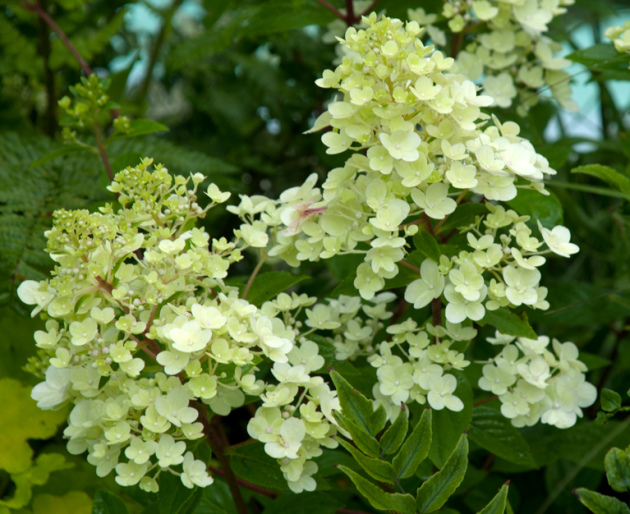
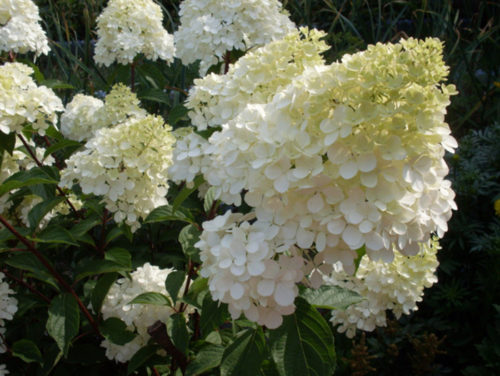
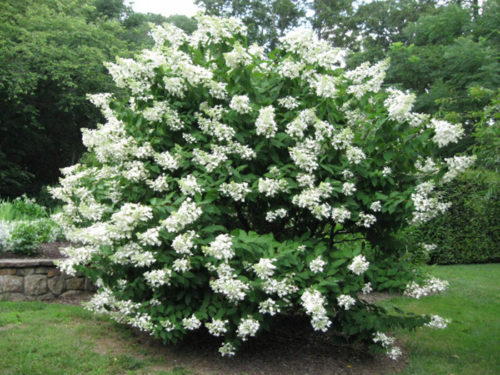
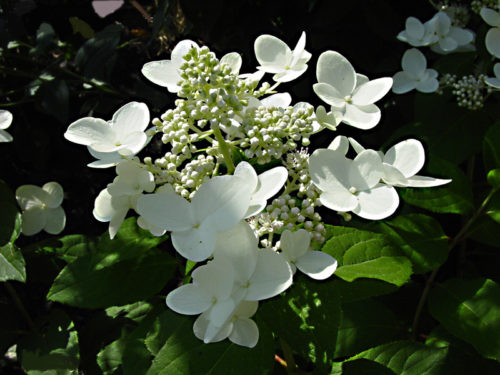
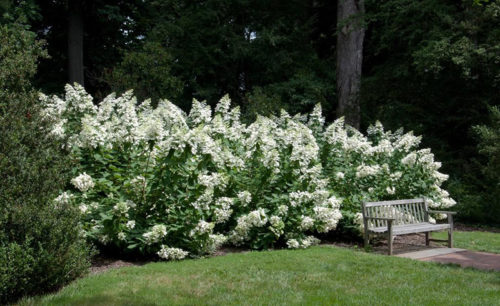
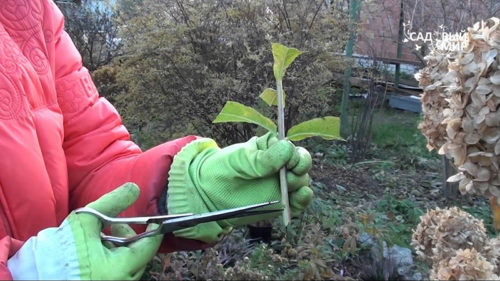
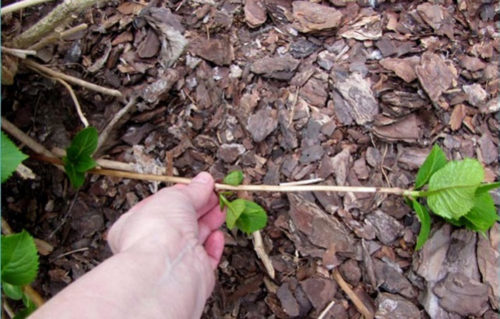

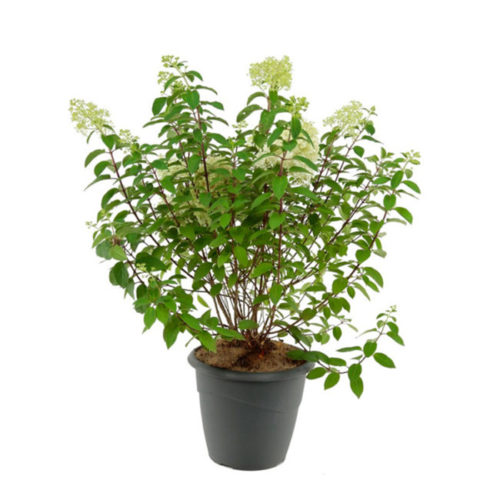


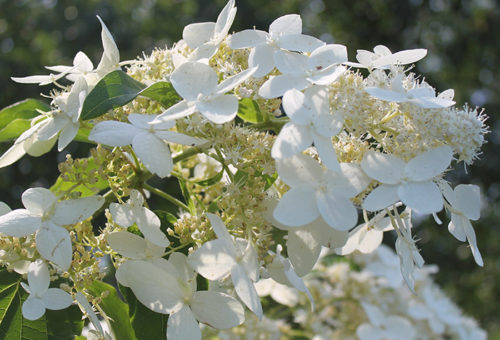
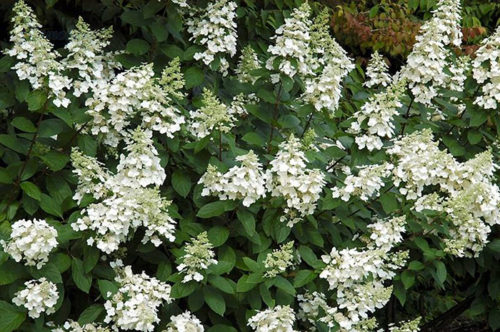
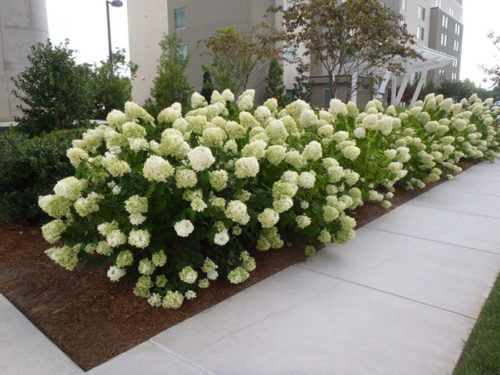













 Start a discussion ...
Start a discussion ...